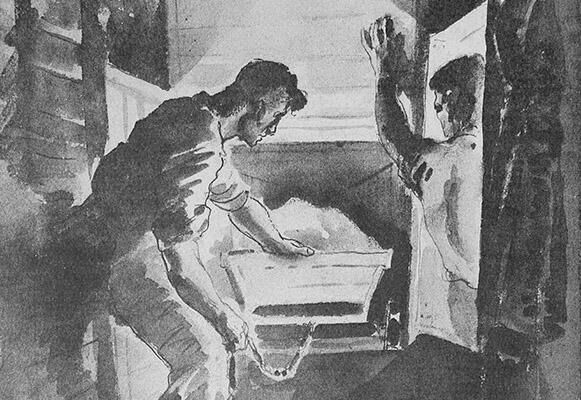
Remembering the airmen of the Great Escape
Published:
Categories:
On the night of March 24, 1944 and into the early hours of the next morning, 76 allied airmen from German Prisoner of War camp, the Stalag Luft III, made their way along the 102 metres of a tunnel codenamed ‘Harry’.
Led by RAF officer Squadron Leader Roger Bushell, who was codenamed ‘Big X’, more than 600 personnel had been digging tunnels, and planning the escape over a period of 15 months.
Three tunnels, codenamed 'Tom,' 'Dick' and 'Harry', were dug using everyday objects from around the camp, with airmen using 2,279 knives, forks and spoons; 4,000 bed boards used to strengthen tunnel wall; and 1,400 milk tins which were turned into ventilation ducts to pump air into the tunnels. Additionally, the airmen used their initiative and skills to hide maps inside of playing cards, forge identification documents, and melt down records used with razor blades to create 100 compasses.
Two hundred men were initially chosen to crawl through 'Harry' to freedom, however only 76 made it out the other side before chaos ensued – as the 76th man was crawling towards the woods, he was spotted by a German guard on patrol. Prisoners waiting in Hut 105 urgently tried to dispose of any evidence, burning maps and identification documents and desperately shoveling rations down their throats.
Unfortunately, all but three escapers were re-captured and 50 were ordered to be executed by Hitler, who was enraged by the scale and the audacity of the escape. Twenty of the murdered prisoners were British. The three escapers that made it to safety were Sergeant Per Bergsland and Second Lieutenant Jens Müller, both Norweigans serving with the RAF, and Flight Lieutenant Bram van der Stok, a Dutch airman serving with the RAF.
Back in February 2019, the RAF Benevolent Fund spoke with Jack Lyon, who was left inside the wire following the Great Escape. The airman, who sadly passed away the following month, said: "It was a costly operation but not necessarily unsuccessful. It did do a lot for morale, particularly for those prisoners who'd been there for a long time. They felt they were able to contribute something, even if they weren't able to get out. They felt they could help in some way and trust me, in prison camps, morale is very important."